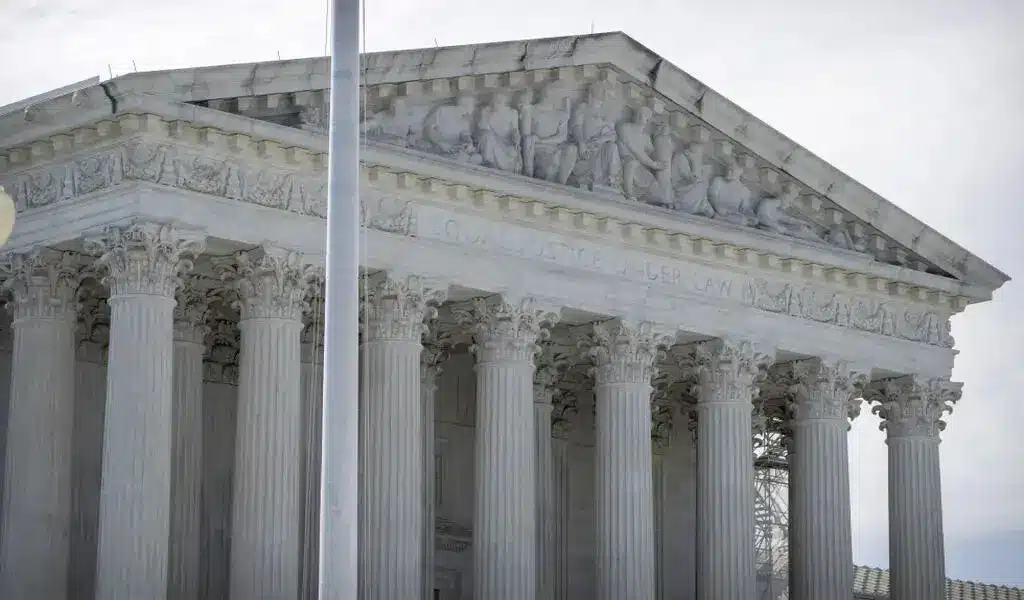News
Sudden Public Hearing on Mekong “Rapids-Blasting” Project Catches Community Group by Surprise
CHIANG RAI – As a new year dawns, the waters of the Mekong River remain turbulent with uncertainty. While many take holidays and prepare for the new year, the people of the Mekong face an unknown future.
Earlier this month, residents along the Mekong in Chiang Rai were preparing to participate in a public hearing about a project to canalize the Lancang-Mekong, popularly known as the Mekong “rapids-blasting” project. The Chiang Khong Conservation Group, a local environmental organization, was informed by the Marine Department that eight hearings would be organized in districts along the Mekong in Chiang Rai from December 12-18. However, just one day before the meetings were due to begin, the group received a letter advising that the hearings would be postponed indefinitely.
Shocking Change of Direction
Just at the new year, an announcement was made that the hearings would be during this week (3-5 January). The sudden change of plans took the community group by surprise. This latest twist follows a pattern of contradictory statements regarding the plans for the rapids-blasting project.
Nearly two decades ago, China, Myanmar, Laos and Thailand signed the Agreement on Commercial Navigation on the Lancang-Mekong River. The agreement aims to enable navigation of 500-tonne freighters between southern China’s Yunnan to the Thai-Lao border and on to Luang Prabang. The agreement has provided a basis for proposals for canalisation of rapids to enable year-round traffic of commercial barges. Under this plan, the Mekong would eventually be converted into a waterway for commercial navigation. The project has already been implemented along Myanmar-Laos border, up to the Thai border at the Golden Triangle. For Thai communities, the plans raise grave concerns over the threat to the river ecosystem, critical fish habitat and breeding grounds, and local livelihoods.

Thai activist Niwat Roykaew says China’s plan to blast rocks and islets will “kill” the Mekong River’s ecology and environment. Photo: Tom Fawthrop
The proposed canalization in Thailand was suspended for more than 10 years by previous Thai governments. Major concerns were the project’s environmental impacts and issues of national security and sovereignty at the Thai-Lao border.
Then, in late 2016, the developer, China CCCC Second Harbor, requested to meet the Chiang Khong Conservation Group and proposed to share information about the Mekong canalization project, indicating that it had been revived. Within days of the meeting, the Thai Cabinet adopted a resolution supporting the plans for “survey and design”. This was a highly unexpected decision and a huge shock to the Mekong communities of Chiang Rai.
Following a sustained campaign by local communities, in late 2017, Foreign Minister Don Pramudwina, after attending the 3rd Mekong-Lancang Foreign Ministers’ Meeting in Yunnan in December, announced that China had decided to step back from its plan for rapids blasting. The minister reported that the Chinese government acknowledged that the rapid blasting project would hurt communities living along the river. He called it a “New Year’s gift” for Thai people.
Communities left in Limbo
But the recently announced hearings, while currently postponed, reveal that the project is still very much alive and is expected to move forward. The years of suspensions and contradictory announcements continue, and create a prolonged sense of uncertainty for local communities fighting to conserve the character and rich resources of their river.

The Rak Chiang Khong environmental group rode in three long-tailed boats with placards written in Thai, Chinese and English protesting the reefs blasting, in the Mekong river in parallel to a Chinese ship.
The question remains, why is the Mekong-rapids blasting project still being pushed forward, despite the previous suspensions and contrary statements?
The Mekong in Chiang Rai has already experienced severe ecological devastation in recent years due to dam construction on the river’s upper reaches in China. At least 10 dams have been completed on the Lancang, or upper Mekong, with the Jinghong Dam closest to the Thai border, 340 kilometers away. Three more Mekong dams are slated for construction in neighboring Laos, including the Pak Beng dam, proposed for development by a Chinese company in Oudomxay, just 90 kilometres from the Thai border.
Plans for Pak Beng dam include navigation locks to enable passage of commercial barges downstream. Looking at the bigger picture, the canalization proposal can therefore be seen in the context of a much larger plan for the river, converting it from a watershed with fast-flowing rapids to a waterway and powershed in the form of a series of reservoirs and canals – producing energy and profit while facilitating increased cross-border trade and commercial activity.
The Chinese developer of Pak Beng dam has also tried to engage Thai communities campaigning on the project’s adverse environmental impacts. In late 2017, Pak Beng project developer, Datang Corporation, contacted the Chiang Khong Group and asked for a meeting to share information about the proposed dam. A meeting took place in Chiang Khong in January, followed by a technical consultation in November convened at Chiang Mai University.

The project has drawn harsh criticism from civic networks, who said the blasting could threaten fish breeding grounds and threaten rare species such as giant catfish.
During the meeting, the Network of Thai People in Eight Mekong Provinces proposed that a new trans-boundary impact assessment be carried out to reassess its ecological impacts, and the likelihood of extensive damage to fishing, culture, livelihoods and natural resources in the Mekong. The Mekong River Commission has found that the existing study for the Pak Beng dam is seriously flawed, based on outdated data. The company is yet to respond to this proposal.
As a Mekong dweller who has been working to protect the river for two decades, I foresee major concern over the impacts of projects being pushed forward and confusion and fear as people await the next development. Millions of people are watching as the Chinese companies developing these projects try to engage local people in meetings and dialogue. These attempts could be attributed to political considerations, as China looks to increase influence downstream through the auspices of the Lancang-Mekong Cooperation framework, a miniature of the ambitious Belt and Road Initiative, which has raised major environmental concerns globally. They could also be explained by legal obligations, with Chinese laws increasing in stringency with regard to the adverse environmental impacts of investments abroad.
But approaching people of the lower Mekong simply to inform them about incoming projects is meaningless unless it involves real dialogue based on a mutual understanding that we treat the Mekong River as a shared resource.
Also critical to meaningful dialogue is acknowledgement by Mekong states of the damage that is already being inflicted on the river due to dam construction, canalization and other developments. So far, political will has not been forthcoming in exploring collective solutions among the states.

The Mekong is navigable – but not for the large cargo boats China wants to sail the river between Yunnan and Laos.
Instead, governments appear busy serving the vested interests of the private sector, at times with a reckless disregard for environmental and social costs. In his visit to Laos earlier this month, Prime Minister Prayut Chan-o-cha discussed the purchase of cheap power from Laos, almost all of which will be generated by dams on the Mekong and its tributaries, with severe environmental impacts on the river system. At the same time, Thailand is enjoying an unprecedented power glut, and alternative renewable energy technologies are increasingly feasible and cost-competitive.
As we turn the page on a new year, the voice of Mekong communities must be heard: by governments, developers and investors. Do we really need to exploit priceless natural resources for today’s profit without regard to the irreversible consequences – for the river and for current and future generations?
By Pianporn Deetes
__
Pianporn Deetes is Thailand and Myanmar campaigns director with International Rivers, a global NGO working to defend the rights of rivers and communities. Since 2002, she has worked to protect Southeast Asia’s major rivers, the Mekong and Salween. This article was first reported by The Nation

News
Google’s Search Dominance Is Unwinding, But Still Accounting 48% Search Revenue

Google is so closely associated with its key product that its name is a verb that signifies “search.” However, Google’s dominance in that sector is dwindling.
According to eMarketer, Google will lose control of the US search industry for the first time in decades next year.
Google will remain the dominant search player, accounting for 48% of American search advertising revenue. And, remarkably, Google is still increasing its sales in the field, despite being the dominating player in search since the early days of the George W. Bush administration. However, Amazon is growing at a quicker rate.
Google’s Search Dominance Is Unwinding
Amazon will hold over a quarter of US search ad dollars next year, rising to 27% by 2026, while Google will fall even more, according to eMarketer.
The Wall Street Journal was first to report on the forecast.
Lest you think you’ll have to switch to Bing or Yahoo, this isn’t the end of Google or anything really near.
Google is the fourth-most valued public firm in the world. Its market worth is $2.1 trillion, trailing just Apple, Microsoft, and the AI chip darling Nvidia. It also maintains its dominance in other industries, such as display advertisements, where it dominates alongside Facebook’s parent firm Meta, and video ads on YouTube.
To put those “other” firms in context, each is worth more than Delta Air Lines’ total market value. So, yeah, Google is not going anywhere.
Nonetheless, Google faces numerous dangers to its operations, particularly from antitrust regulators.
On Monday, a federal judge in San Francisco ruled that Google must open up its Google Play Store to competitors, dealing a significant blow to the firm in its long-running battle with Fortnite creator Epic Games. Google announced that it would appeal the verdict.
In August, a federal judge ruled that Google has an illegal monopoly on search. That verdict could lead to the dissolution of the company’s search operation. Another antitrust lawsuit filed last month accuses Google of abusing its dominance in the online advertising business.
Meanwhile, European regulators have compelled Google to follow tough new standards, which have resulted in multiple $1 billion-plus fines.

Pixa Bay
Google’s Search Dominance Is Unwinding
On top of that, the marketplace is becoming more difficult on its own.
TikTok, the fastest-growing social network, is expanding into the search market. And Amazon has accomplished something few other digital titans have done to date: it has established a habit.
When you want to buy anything, you usually go to Amazon, not Google. Amazon then buys adverts to push companies’ products to the top of your search results, increasing sales and earning Amazon a greater portion of the revenue. According to eMarketer, it is expected to generate $27.8 billion in search revenue in the United States next year, trailing only Google’s $62.9 billion total.
And then there’s AI, the technology that (supposedly) will change everything.
Why search in stilted language for “kendall jenner why bad bunny breakup” or “police moving violation driver rights no stop sign” when you can just ask OpenAI’s ChatGPT, “What’s going on with Kendall Jenner and Bad Bunny?” in “I need help fighting a moving violation involving a stop sign that wasn’t visible.” Google is working on exactly this technology with its Gemini product, but its success is far from guaranteed, especially with Apple collaborating with OpenAI and other businesses rapidly joining the market.
A Google spokeswoman referred to a blog post from last week in which the company unveiled ads in its AI overviews (the AI-generated text that appears at the top of search results). It’s Google’s way of expressing its ability to profit on a changing marketplace while retaining its business, even as its consumers steadily transition to ask-and-answer AI and away from search.

Google has long used a single catchphrase to defend itself against opponents who claim it is a monopoly abusing its power: competition is only a click away. Until recently, that seemed comically obtuse. Really? We are going to switch to Bing? Or Duck Duck Go? Give me a break.
But today, it feels more like reality.
Google is in no danger of disappearing. However, every highly dominating company faces some type of reckoning over time. GE, a Dow mainstay for more than a century, was broken up last year and is now a shell of its previous dominance. Sears declared bankruptcy in 2022 and is virtually out of business. US Steel, long the foundation of American manufacturing, is attempting to sell itself to a Japanese corporation.
SOURCE | CNN
News
2024 | Supreme Court Won’t Hear Appeal From Elon Musk’s X Platform Over Warrant In Trump Case

Washington — Trump Media, The Supreme Court announced Monday that it will not hear an appeal from social media platform X about a search warrant acquired by prosecutors in the election meddling case against former President Donald Trump.
The justices did not explain their rationale, and there were no recorded dissents.
The firm, which was known as Twitter before being purchased by billionaire Elon Musk, claims a nondisclosure order that prevented it from informing Trump about the warrant obtained by special counsel Jack Smith’s team violated its First Amendment rights.
The business also claims Trump should have had an opportunity to exercise executive privilege. If not reined in, the government may employ similar tactics to intercept additional privileged communications, their lawyers contended.
Supreme Court Won’t Hear Appeal From Elon Musk’s X Platform Over Warrant In Trump Case
Two neutral electronic privacy groups also joined in, urging the high court to hear the case on First Amendment grounds.
Prosecutors, however, claim that the corporation never shown that Trump utilized the account for official purposes, therefore executive privilege is not a problem. A lower court also determined that informing Trump could have compromised the current probe.

Trump utilized his Twitter account in the weeks preceding up to his supporters’ attack on the Capitol on January 6, 2021, to spread false assertions about the election, which prosecutors claim were intended to create doubt in the democratic process.
The indictment describes how Trump used his Twitter account to encourage his followers to travel to Washington on Jan. 6, pressuring Vice President Mike Pence to reject the certification, and falsely claiming that the Capitol crowd, which battered police officers and destroyed glass, was peaceful.
Supreme Court Won’t Hear Appeal From Elon Musk’s X Platform Over Warrant In Trump Case
That case is now moving forward following the Supreme Court’s verdict in July, which granted Trump full immunity from criminal prosecution as a former president.
The warrant arrived at Twitter amid quick changes implemented by Musk, who bought the company in 2022 and has since cut off most of its workforce, including those dedicated to combating disinformation and hate speech.
SOURCE | AP
News
The Supreme Court Turns Down Biden’s Government Appeal in a Texas Emergency Abortion Matter.

(VOR News) – A ruling that prohibits emergency abortions that contravene the Supreme Court law in the state of Texas, which has one of the most stringent abortion restrictions in the country, has been upheld by the Supreme Court of the United States. The United States Supreme Court upheld this decision.
The justices did not provide any specifics regarding the underlying reasons for their decision to uphold an order from a lower court that declared hospitals cannot be legally obligated to administer abortions if doing so would violate the law in the state of Texas.
Institutions are not required to perform abortions, as stipulated in the decree. The common populace did not investigate any opposing viewpoints. The decision was made just weeks before a presidential election that brought abortion to the forefront of the political agenda.
This decision follows the 2022 Supreme Court ruling that ended abortion nationwide.
In response to a request from the administration of Vice President Joe Biden to overturn the lower court’s decision, the justices expressed their disapproval.
The government contends that hospitals are obligated to perform abortions in compliance with federal legislation when the health or life of an expectant patient is in an exceedingly precarious condition.
This is the case in regions where the procedure is prohibited. The difficulty hospitals in Texas and other states are experiencing in determining whether or not routine care could be in violation of stringent state laws that prohibit abortion has resulted in an increase in the number of complaints concerning pregnant women who are experiencing medical distress being turned away from emergency rooms.
The administration cited the Supreme Court’s ruling in a case that bore a striking resemblance to the one that was presented to it in Idaho at the beginning of the year. The justices took a limited decision in that case to allow the continuation of emergency abortions without interruption while a lawsuit was still being heard.
In contrast, Texas has been a vocal proponent of the injunction’s continued enforcement. Texas has argued that its circumstances are distinct from those of Idaho, as the state does have an exemption for situations that pose a significant hazard to the health of an expectant patient.
According to the state, the discrepancy is the result of this exemption. The state of Idaho had a provision that safeguarded a woman’s life when the issue was first broached; however, it did not include protection for her health.
Certified medical practitioners are not obligated to wait until a woman’s life is in imminent peril before they are legally permitted to perform an abortion, as determined by the state supreme court.
The state of Texas highlighted this to the Supreme Court.
Nevertheless, medical professionals have criticized the Texas statute as being perilously ambiguous, and a medical board has declined to provide a list of all the disorders that are eligible for an exception. Furthermore, the statute has been criticized for its hazardous ambiguity.
For an extended period, termination of pregnancies has been a standard procedure in medical treatment for individuals who have been experiencing significant issues. It is implemented in this manner to prevent catastrophic outcomes, such as sepsis, organ failure, and other severe scenarios.
Nevertheless, medical professionals and hospitals in Texas and other states with strict abortion laws have noted that it is uncertain whether or not these terminations could be in violation of abortion prohibitions that include the possibility of a prison sentence. This is the case in regions where abortion prohibitions are exceedingly restrictive.
Following the Supreme Court’s decision to overturn Roe v. Wade, which resulted in restrictions on the rights of women to have abortions in several Republican-ruled states, the Texas case was revisited in 2022.
As per the orders that were disclosed by the administration of Vice President Joe Biden, hospitals are still required to provide abortions in cases that are classified as dire emergency.
As stipulated in a piece of health care legislation, the majority of hospitals are obligated to provide medical assistance to patients who are experiencing medical distress. This is in accordance with the law.
The state of Texas maintained that hospitals should not be obligated to provide abortions throughout the litigation, as doing so would violate the state’s constitutional prohibition on abortions. In its January judgment, the 5th United States Circuit Court of Appeals concurred with the state and acknowledged that the administration had exceeded its authority.
SOURCE: AP
SEE ALSO:
Could Last-Minute Surprises Derail Kamala Harris’ Campaign? “Nostradamus” Explains the US Poll.
-

 News4 years ago
News4 years agoLet’s Know About Ultra High Net Worth Individual
-
Entertainment2 years ago
Mabelle Prior: The Voice of Hope, Resilience, and Diversity Inspiring Generations
-
News11 years ago
Enviromental Groups Tell Mekong Leaders Lao Dam Evaluation Process Flawed
-

 Health4 years ago
Health4 years agoHow Much Ivermectin Should You Take?
-

 Tech3 years ago
Tech3 years agoTop Forex Brokers of 2023: Reviews and Analysis for Successful Trading
-

 Lifestyles3 years ago
Lifestyles3 years agoAries Soulmate Signs
-

 Entertainment3 years ago
Entertainment3 years agoWhat Should I Do If Disney Plus Keeps Logging Me Out of TV?
-

 Health3 years ago
Health3 years agoCan I Buy Ivermectin Without A Prescription in the USA?


